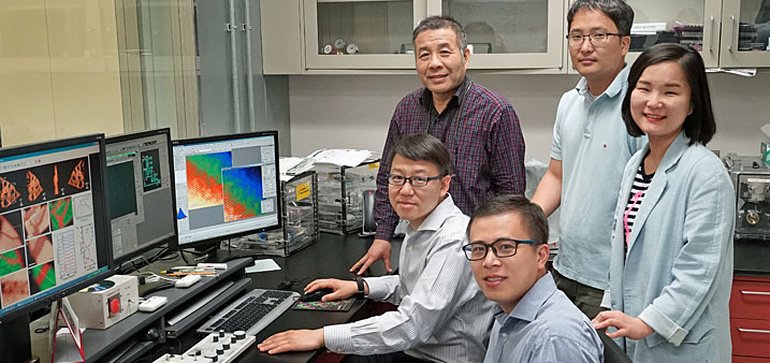
Cathodes present a bottleneck when it comes to improving the density of li-ion batteries.
Compared with a li-ion battery’s conventional graphite anode, cathodes are limited. A conventional graphite cathode, in a process known as intercalation, can only transfer a single electron. But compounds like iron trifluoride can transfer multiple electrons.
Past efforts to use iron trifluoride for cathodes had introduced new problems. Energy efficiency was reduced. Reaction rates became slower, and side reactions resulted in poor cycling life. By adding cobalt and oxygen atoms to iron fluoride nanorods, the UMD-Brookhaven-Army team was able to manipulate the reaction pathway and make it more reversible. The iron fluoride material was synthesized at UMD and tested at Brookhaven.
As a next step, the scientists are looking at using their new material in other applications and other types of batteries. The UMD scientists said their research strategy could be applied to other high energy conversion materials, and future studies may use the approach to improve other battery systems.
The most immediate use of the material would likely be in consumer electronics before it found its way into electric vehicles and stationary energy storage.
“From a performance perspective, this is pretty impressive,” Christopher Robinson, an analyst with Lux Research, told Utility Dive. “1,000 cycles is pretty impressive.”
In terms of applications, however, Robinson said stationary energy storage would not be the most obvious use for the iron fluoride technology. Energy density is not necessarily the most important factor for stationary storage, he said. Levelized cost over the life of the project is a more important metric and, on that scale, even small efficiency losses relative to conventional li-ion chemistry add up.
“I’ve read the paper, and I’m impressed,” Robinson said, but he added that with other technological advances it has taken a decade or so before they entered the commercial marketplace.
